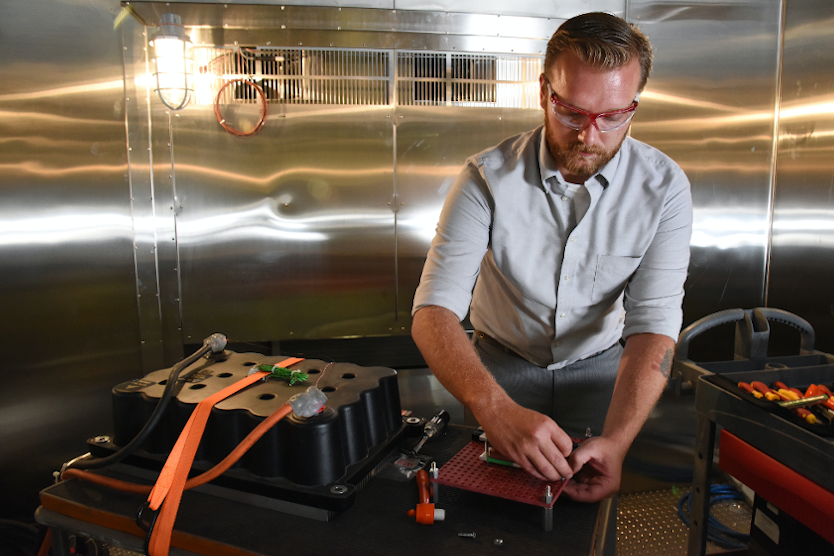
The even distribution of the lithium during the charging process of a battery increases its performance.
© Unsplash
Consumer confidence in electric vehicles (EVs) depends as much on practical factors such as charging time as it does on performance. Improving the charging times of EV batteries is therefore a critical area of research at the moment. The Technical University of Munich (TUM) has just published findings that will move the field forward and pave the way towards the “super-battery”.
When electricity is fed into a car battery, the charge indicator moves quickly at first, then much more slowly at the end. "It's like putting things into a closet: In the beginning it's easy, but finding available space gets more difficult as the closet fills up," explains Doctor Anatoliy Senyshyn from the TUM's Research Neutron Source Heinz Maier-Leibnitz (FRM II) department in a press release.
Senyshyn’s team zoomed in on the distribution of lithium within the battery during the entire charging and discharging process. Lithium ions move from the cathode to the anode during charging, and in the opposite direction when discharging. During these cycles, the researchers found that the lithium shifts about, which affects charging times. "When the lithium is unevenly distributed, the exchange of lithium between the anode and the cathode doesn't work at a hundred percent in the parts of the battery where too much or too little lithium is present. However, an even distribution of lithium increases performance," says Senyshyn.
Using highly specialised equipment including the materials science diffractometer STRESS-SPEC, the Helmholtz Association's DESY ("Deutsches Elektronen-Synchrotron") and the European Synchrotron Radiation Facility (ESRF) in France, the scientists were able to observe material movements at the micrometre level.
"The distribution of the lithium can influence many battery properties. Once we have these better under control, we'll be able to significantly improve the performance of batteries in the future,” summarises Senyshyn.


